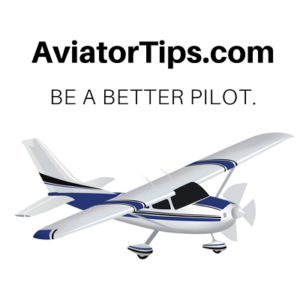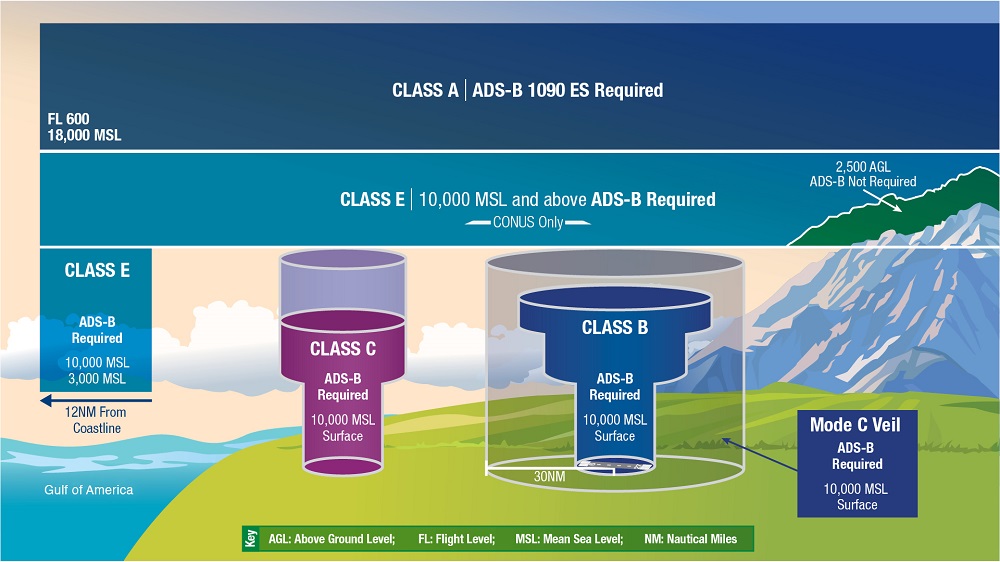Airspace can seem overwhelming when you first start flying. All those classes, shapes, altitudes, and rules might look like a tangled web on your sectional chart. But understanding complex airspace is a skill every student and private pilot needs to master.
Whether you’re preparing for your checkride or planning your first solo cross-country flight, knowing how to recognize and operate safely in complex airspace can make your flying smoother, safer, and more enjoyable.
What Is Complex Airspace?
Complex airspace is any area with multiple layers, high traffic volume, special restrictions, or overlapping airspace classes. These areas often surround busy airports or contain military and restricted operations.
As a private pilot, you are likely to encounter complex airspace in:
- Major metropolitan areas
- Transition zones between airspace classes
- Near military bases or special use airspace
- While flying IFR traffic routes under VFR
- Around temporary flight restrictions (TFRs)
Why Airspace Is Divided
The National Airspace System (NAS) is structured to keep traffic flowing smoothly while ensuring safety for both VFR and IFR pilots. Different types of airspace serve different purposes:
- Controlled Airspace provides ATC services and separation
- Uncontrolled Airspace has fewer restrictions but no ATC services
- Special Use Airspace protects certain areas or missions
- Other Airspace Areas provide alerts or services like weather briefings and flight following
Each type has specific requirements for communication, equipment, and pilot certification. Knowing what is required before you enter makes all the difference.
Controlled Airspace Overview
Let’s start with the most common classes of controlled airspace student and private pilots need to know:
Class B Airspace (Big and Busy)
- Location: Surrounds the nation’s busiest airports (e.g., LAX, JFK, ATL)
- Shape: Upside-down wedding cake with multiple layers
- Altitude: Typically up to 10,000 feet MSL
- Entry Requirements:
- ATC clearance required to enter
- Two-way radio and Mode C transponder with ADS-B Out
- Private pilot certificate (or student pilot with special endorsement)
- Why It Matters: You must be explicitly cleared into Class B. Saying “with you” is not enough. If ATC does not say “cleared into Class Bravo,” you cannot enter.
Class C Airspace (Commercial Airports)
- Location: Around airports with moderate airline traffic
- Shape: Two layers like an upside-down cylinder
- Inner core: 5 NM radius, surface to 4,000 feet AGL
- Shelf: 10 NM radius, 1,200 feet to 4,000 feet AGL
- Entry Requirements:
- Two-way radio contact with ATC (controller must say your call sign)
- Mode C transponder and ADS-B Out required
- Why It Matters: You do not need a specific clearance like Class B, but you must establish communication before entering.
Class D Airspace (Towered Airports)
- Location: Around smaller towered airports
- Shape: Cylinder with a typical radius of 4 NM, surface to 2,500 feet AGL
- Entry Requirements:
- Two-way radio contact with the control tower
- No Mode C required unless in proximity to Class B or C
- Why It Matters: You must make contact before entry and continue communication while inside. Always check the NOTAMs for tower operating hours.
Class E Airspace (Everywhere Else)
- Location: Starts at various altitudes depending on location
- Shapes:
- Fills in around Class B, C, and D
- Starts at 1,200 AGL or 700 AGL near airports
- Extends up to 18,000 feet MSL
- Entry Requirements:
- No communication required for VFR
- IFR flights must be in contact with ATC
- Why It Matters: Although it is controlled airspace, VFR pilots can freely operate without ATC involvement unless transitioning through busy areas.
Class A Airspace (Above It All)
- Location: 18,000 feet MSL up to FL600
- Requirements: IFR only, ATC clearance required, not used by student pilots
Special Use Airspace
These areas require additional caution and awareness:
Restricted Areas
- May contain unusual or hazardous activity
- Can only be entered with ATC clearance
- Check sectional charts and call FSS for active times
Prohibited Areas
- No entry allowed. Examples include Washington, D.C. airspace.
Military Operations Areas (MOAs)
- VFR flights allowed but should exercise caution
- Military training activities may involve high-speed maneuvers
Alert Areas
- High volume of pilot training or unusual activity
- VFR flights permitted but should be extra vigilant
Warning Areas
- Usually offshore, may contain military operations similar to MOAs
Temporary and Other Special Use Zones
Temporary Flight Restrictions (TFRs)
- Short-term airspace restrictions for security, VIP movement, or disaster response
- Common around major events and wildfires
- Must be checked before every flight using your EFB, 1800wxbrief.com, or ATIS
National Security Areas (NSAs)
- Pilots are strongly encouraged to avoid these areas
- May become restricted with short notice
Wildlife and Wilderness Areas
- Avoid flying below 2,000 feet AGL
- Marked on sectionals with a blue border and text
Real-World Tips for Navigating Complex Airspace
1. Use Your Sectional Wisely
Learn how to read and interpret sectional charts. Use the legend to understand the different airspace boundaries and color codes.
2. Use an EFB but Know the Basics
Apps like ForeFlight and Garmin Pilot are fantastic for real-time airspace awareness, but always understand how to navigate using paper in case your tablet fails.
3. Ask for Flight Following
Even in VFR, ATC can help you stay clear of Class B or C airspace. Ask for VFR advisories and monitor nearby traffic.
4. Know How to Talk to ATC
Practice making clear, concise radio calls. Use the correct phraseology when entering Class C or D and always listen carefully to instructions.
5. Plan Around Busy Airspace
If you do not need to enter Class B or C, plan to go around it. Avoiding complex airspace can reduce stress during early cross-country flights.
6. Monitor Squawk Codes
If flying near Class C or B, keep your transponder set to 1200 unless assigned a code by ATC. If you enter these areas with a discrete code, ATC may assume you are in contact.
7. Review Before You Fly
Use your chart, EFB, and airport facilities directory to review any airspace boundaries near your planned route.
Practical Scenario: Cross-Country to a Class C Airport
Let’s say you’re planning a solo cross-country to an airport in Class C airspace.
- Preflight: Plan your route, note when you will enter Class C, and identify frequencies.
- Departure: Request VFR flight following from ATC.
- Approach: Contact approach when 20-30 miles out:
“Minneapolis Approach, Cessna 7234X, 25 miles south at 3,000 feet, inbound for landing at Flying Cloud with information Bravo.” - Response:
“Cessna 7234X, Minneapolis Approach, radar contact. Remain outside Class Charlie, expect vectors for sequencing.” - Once cleared into the airspace, continue monitoring and responding to ATC until you are handed off to the tower.
Final Thoughts
Airspace might look complex at first, but with practice, it becomes second nature. Think of it as a neighborhood map in the sky. Some areas are like quiet residential streets. Others are like busy intersections with traffic lights and rules.
As a student or private pilot, the key is preparation. Know your route, understand the airspace types you’ll be flying through, and always stay sharp with your radio and chart skills.
By combining solid knowledge with good communication and modern tools, you can confidently navigate even the busiest skies.
Sources:
– FAA: *Aeronautical Chart User’s Guide*
– FAA: *Pilot’s Handbook of Aeronautical Knowledge (PHAK)*
– FAA: *Airspace Classification Overview*
– AOPA: *Understanding Airspace*
– ForeFlight: *Airspace and TFR Features*
Recent Posts
FAA MOSAIC Final Rule: What Pilots, Manufacturers, and the Aviation Community Need to Know
Learn how the FAA’s MOSAIC final rule revolutionizes Light-Sport Aircraft certification, expands Sport Pilot privileges, and reshapes general aviation. See what’s changing, when it takes effect,...
Student Pilot Insurance: Essential Coverage for Aspiring Flyers
Discover how student pilot insurance can protect your flying dreams. Get expert tips and coverage options to ensure your safety and peace of mind.


